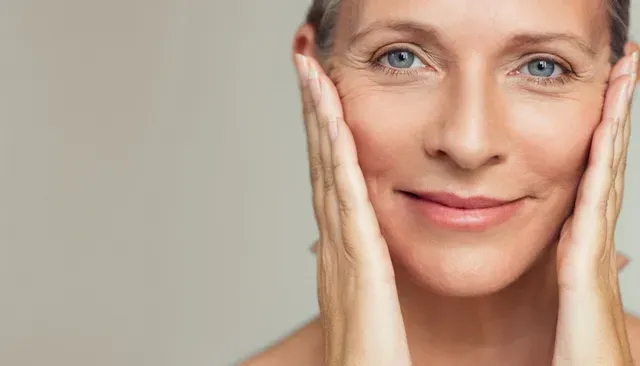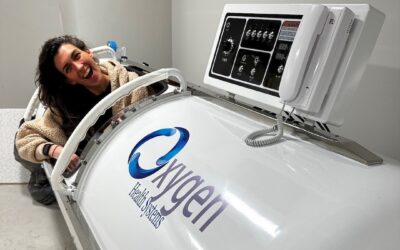There is no doubt that hormones affect almost every aspect of our health. Produced by the Endocrine System, these chemical messengers are involved with various functions in the body such as reproductive health, metabolism, heart rate, sleep cycles, and stress. Even a small shift in hormonal levels can bring about substantial change in the body. However, many people are unaware of the significant role that hormones play on the look and feel of the largest organ in their body – the skin.
From puberty through menopause, women in particular experience numerous changes in their skin, due to fluctuating hormone levels. The three key players affecting the appearance and texture of the skin are; Estrogen, Progesterone, and Testosterone.
So which hormones are responsible for what?
- Estrogen: Helps skin to stay supple and hydrated by boosting collagen, elastin and hyaluronic acid production.
- Progesterone: Causes skin to dilate slightly, tightens the look of pores and stimulates sebum production.
- Testosterone: Stimulates oil production in the sebaceous glands.
Hormonal Acne
If you’ve ever dealt with acne then you know how challenging it can be. Maybe you’ve tried every “clear skin solution” on the market, to no avail. Or, maybe you’ve tried changing your diet in hopes of blemish-free skin, but still experience regular breakouts. It can be pretty exhausting! Although proper skincare, diet and lifestyle are all very influential on overall skin health, your hormones might be the acne-causing culprits.
Typically making an appearance about one week before menstruation, hormonal blemishes tend to be concentrated around the cheeks and jawline. So what is happening in the body at this time? About 10 days before your period, higher levels of testosterone stimulate the sebaceous glands to increase sebum production, which means more oil buildup. This excess sebum combines with dead skin and bacteria creating a blockage in the pore, ultimately causing the hormonal breakout. Solidified sebum, dead skin cells, and hair form what are commonly referred to as blackheads and whiteheads. From there, a type of bacteria called Propionibacterium acnes a.k.a P.acnes thrive in this condition and begin to grow, causing inflammation in the pore. Eventually, the wall of the oil gland bursts and the body’s natural defense is called to action. Swelling then occurs in the form of a pimple.
What can be done?
When it comes to skincare, prevention is always better than the cure, and a proper daily skincare routine is critical to overall health of the skin. It’s important to choose the right products for your skin condition, and a few key ingredients really stand out when dealing with hormonal acne:
Vitamin A
Arguably the most important Vitamin for the skin. Essential to skin health, a deficiency in Vitamin A is one of the main causes of skin degradation. Vitamin A has the ability to normalize skin cell function – such as oil production. Another benefit is that it increases cellular turnover, which decreases buildup in the cell, minimizing the chance of breakout. It can also accelerate healing and support the skin’s immune function.
Niacinamide (B3)
Niacinamide has both anti-inflammatory and sebum controlling properties. Vitamin B3 also helps to prevent transepidermal water loss which in return helps maintain the skin’s barrier function.
Alpha-Hydroxy Acid & Beta-Hydroxy Acid (AHAs and BHAs)
Both are well known for their exfoliating properties. Salicylic Acid is a beta-hydroxy acid ideal for oily skin due to its ability to break down oil and kill bacteria. Lactic Acid is a gentle alpha-hydroxy acid which also has hydrating properties. Again, these are crucial to promoting skin barrier function.
In addition to a proper skin care regimen, seeking professional treatments on a regular basis will help to target P. Acnes bacteria, dead skin buildup and excess oil at a deeper level than a home-care regimen. Professional peels are the number one treatment to help keep skin clear during hormonal fluctuations. Peeling reduces the buildup of dead matter in the follicle and helps to regulate oil production in the pore. Thus reducing inflammation and blemishes. A series of peels is recommended, and each peel is typically spaced out in a 2-4 week interval.
What About Menopause?
Menopause is a period of major transition in a woman’s life. Defined by the halt of menstruation for 12 back-to-back months. Estrogen production begins to decline at this time, which causes skin changes – both structural and functional. Estrogen plays a vital role in collagen and elastin formation which means that when this hormone declines, so does skin thickness and elasticity. This is why we start to see more wrinkle formation around menopause. According to studies, women lose around 30% of collagen within the first few years of menopause. In addition, this thinning of the skin allows imperfections such as hyperpigmentation and broken capillaries to become more visible. Skin dryness and sensitivity may also be an issue, prompting a change in your everyday skincare regimen.
Increasing hydration and boosting collagen and elastin during menopause is imperative for a youthful complexion. Anti-aging ingredients such as Vitamin A, peptides, alpha-hydroxy acids and antioxidants will help to maintain the function and appearance of the skin. Also during menopause, skin is not able to hold on to as much moisture, so humectants such as hyaluronic acid are key to tissue hydration and boosting cellular function.
Since we see such a significant decline in collagen and elastin during Menopause, professional treatments that work to boost production of these specific proteins are necessary to maintain a plump appearance to the skin. Two effective ways to accomplish this are through micro-needling and radiofrequency.
What can be done?
Microneedling
Microneedling – also known as collagen induction therapy – was pioneered by plastic surgeon, Dr. Des Fernandes. This procedure is clinically proven to stimulate and influence the body’s natural healing properties through small micro-channels. As a result of skin needling, growth factors are released in the dermal layers of the skin, resulting in more collagen and elastin production.
Radiofrequency
Radiofrequency is an excellent option for those concerned with sagging skin and signs of premature aging. Electromagnetic waves heat up the dermis which stimulates collagen remodeling and tightens the skin. This procedure offers minimal downtime and is safe for all skin tones.
Contact OWM
Dealing with the effects that hormonal fluctuations have on the skin can be tiresome. If you are experiencing continuous breakouts, or a loss in skin elasticity, then hormones might be the cause. The aestheticians at Spa by OWM can help you to establish a proper skincare regimen to manage skin changes, and renew your complexion.
It’s important to note that hormonal challenges on the skin are easier to manage when treated from the inside out. A meeting with Dr. Kaplan or one of our highly experienced Nurse Practitioners is encouraged to have hormone levels checked. The integrative approach that our clinic offers will help you to master your skin care challenges once and for all.




